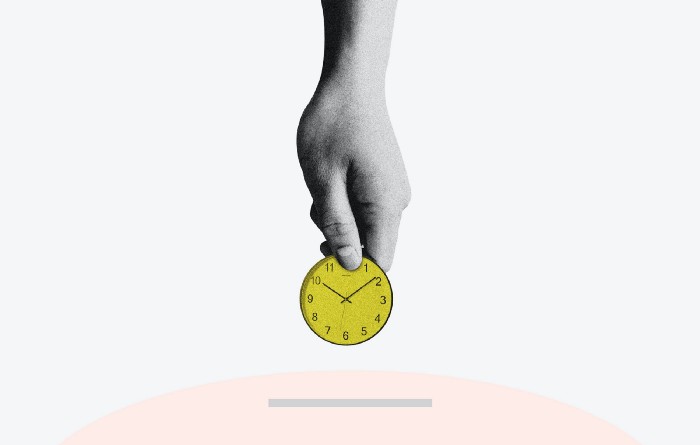Revenues increased, productivity improved, but people also left
Stephan Aarstol founded his own business in 2010. You might remember him as the guy who froze during his 2012 pitch on ABC’s Shark Tank but still walked off with $150,000 from Mark Cuban.
Today, he runs a successful online paddle-board business, based out of San Diego, California.
Being a beach lifestyle company Aarstol was keen to find a way for his employees to spend more time enjoying the outdoor lifestyle the company promoted.
So, in June 2015, he offered his employees a deal: If they could figure out how to do the same work in less time, they could keep the same salary and leave at 1 pm.
Why did he do it?
Aarstol didn’t just want to promote a healthier work-life balance for his team. He also saw the move to a 5-hour workday as an opportunity to harness technology to increase productivity. During a recent interview Aarstol said “In 1914, Henry Ford cut autoworkers’ weeks to 40 hours, taking advantage of new fangled assembly lines that made people more productive. The internet and related technologies have goosed productivity even more — and yet, wages have not gone up, and hours have stayed the same.”
“At the same time that people have the ability to be massively more productive, they also now have the ability to massively waste time,”. With all the available distractions, Aarstol believes that most people, on average, are likely getting two or three hours of productive work each day.
A growing number of case studies support his theory. According to the Bureau of Labor Statistics, the average American works 8.8 hours every day. Yet the average worker is only productive for 2 hours and 53 minutes. The majority of people’s time is spent checking emails, going to meetings, and engaging in small talk.
So, what happened when Tower Paddleboards switched to a five-hour workday?
The team became more efficient
Just as Aarstol theorized, shortening the workday significantly boosted the team’s efficiency. Placing a time constraint on the workday forced people to focus, and ensured that high-value activities were prioritized.
It also forced the team to think creatively about how to leverage technology. For instance, Aarstol had to figure out how his warehouse and customer service teams could serve the same number of customers in 30% less time. The answer was automation. In the warehouse, packing and shipping time was reduced using software. In customer services, the FAQ page was redesigned and video tutorials were created to help customers answer questions without direct staff engagement.
The team became more outcomes focused
At the same time as introducing a shortened workday, Tower Paddleboards introduced a 5 percent profit sharing scheme. This ensured the team stopped thinking of work in hours and started to think in terms of outcome. The more they made the business a success the more they were rewarded.
According to Aarstol, combining the profit sharing scheme with a shortened workday nearly doubled everyone’s earnings “For example, an employee with a salary of $40,000 who worked 2,000 hours (50 40-hour weeks) earned $20 an hour. Reduce the number of hours to 1,250, add $8,000 in profit-sharing, and he’s making $38 an hour.”
Initially, Aarstol was concerned that some employees may use the time to pick up a second job, defeating the purpose of improving work-life balance. “I told some people if you really want to bump your wage you can use the free hours to drive Uber,” says Aarstol. “But they are just enjoying the lifestyle.”
Allison Dundovich, director of digital is a prime example. She typically spends her afternoons having lunch with friends, playing softball, reading, or pursuing her hobby of interior design. “It’s a good time for me to unleash my creative side,” she says. “It really has made me a lot happier.”
Company revenue increased
The day Tower announced the change on their website, they broke their previous daily sales record and booked $50,000 in sales for the first time. By the end of their first month, they had sold $1.4 million worth of paddleboards, breaking their previous monthly sales by $60,000.
And by the end of their first year of 5-hour workdays, revenues were up by 40%.
While you can’t directly attribute all of Tower’s success to a shorter working day, the increased focus, productivity, and boost to team well-being clearly had a positive impact.
But people also left the company
Looking at where Tower Paddleboards is today, it’s easy to think that shortening their workday was a complete success. But it wasn’t all plain sailing (water sports pun intended).
After announcing the new initiative, Aarstol lost four people from his team of nine, over a 90-day period.
Initially, Aarstol didn’t understand why shorter workdays were causing people to leave, particularly because productivity remained strong.
In an interview with CNBC, he speculated it came down to company culture “We’re a start-up company where you’re kind of in the trenches with everybody, and you form really strong bonds with people. We developed a really strong culture because of that. And when all of a sudden you’re walking out of work at one o’clock, your outside world becomes much bigger — you don’t have a strong bond with co-workers. And I think that’s why it was very easy for people to leave.”
“People don’t leave a company; I think they leave the people they work with,” he added. “So company culture sort of trumps everything else there, and we were sacrificing that for the five-hour workday.”
He addressed the issue by limiting 5-hour workdays to four months over the summer, allowing people to make the most of the long summer days while getting the start-up culture in the offseason.
It is a policy that remains in place today.
The case for a shorter working day
Worldwide around 22% of workers are working more than 48 hours a week. In Japan, long work hours are now such a significant issue that ‘karoshi’, translated as death by overwork, is a legally recognized cause of death. Thousands a year are literally working themselves to death, a phenomenon known among authorities as “occupation sudden mortality”.
And the shift to remote working during the pandemic has only made things worse. Homeworking has led to a 2.5 hour increase in the average working day in most countries, based on research by Nord VPN, a company that provides virtual private networks to businesses. The United Kingdom and the Netherlands both stand out where employees are typically working until 8 pm.
The effects of regular long work hours on our health are wide-ranging. Researchers have found that working long hours is linked with a variety of health issues, including increased risks of stroke, heart disease, diabetes, and abnormal heart rhythms.
And it’s not just physical effects. Regularly working long hours results in poor work-life balance, leading to lower job satisfaction and performance, as well as lower satisfaction with life and personal relationships.
And it’s counterproductive for companies. Overworked employees are less productive than well-rested workers. They’re less engaged at work and more likely to leave. Employee burnout costs the global economy an estimated $300bn a year in sick days and lost productivity.
We need to rethink how we work in the digital age
Organizations are currently spending significant sums on digital transformation, but a far more impactful change would be to rethink the way we work, not just the tools we use to work.
We are now working more hours than factory workers did over one hundred years ago, which will cause long-lasting damage to the physical and mental health of workers. It’s time to rethink how we are working in the digital age; ensuring people can do their best work and live their best lives simultaneously.





